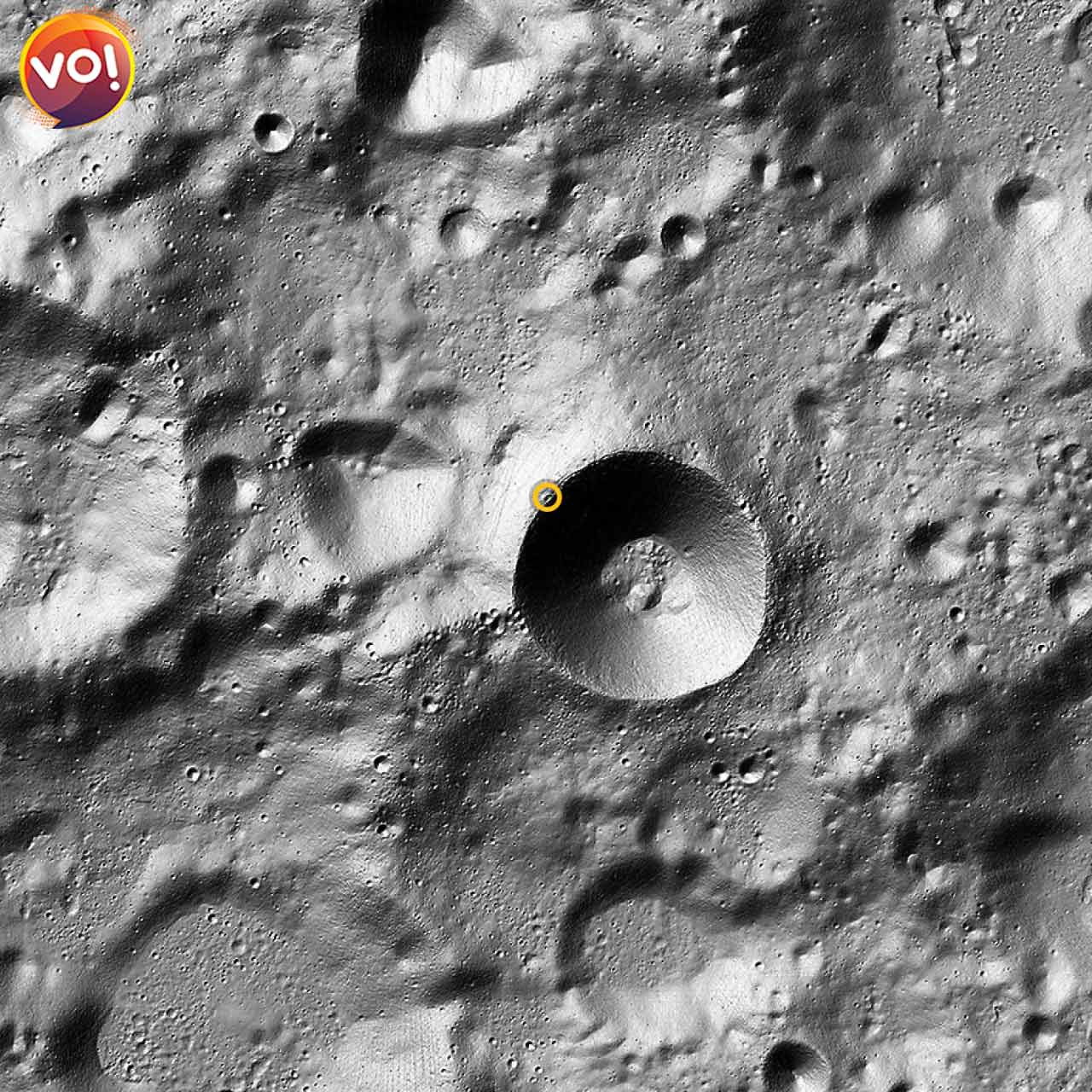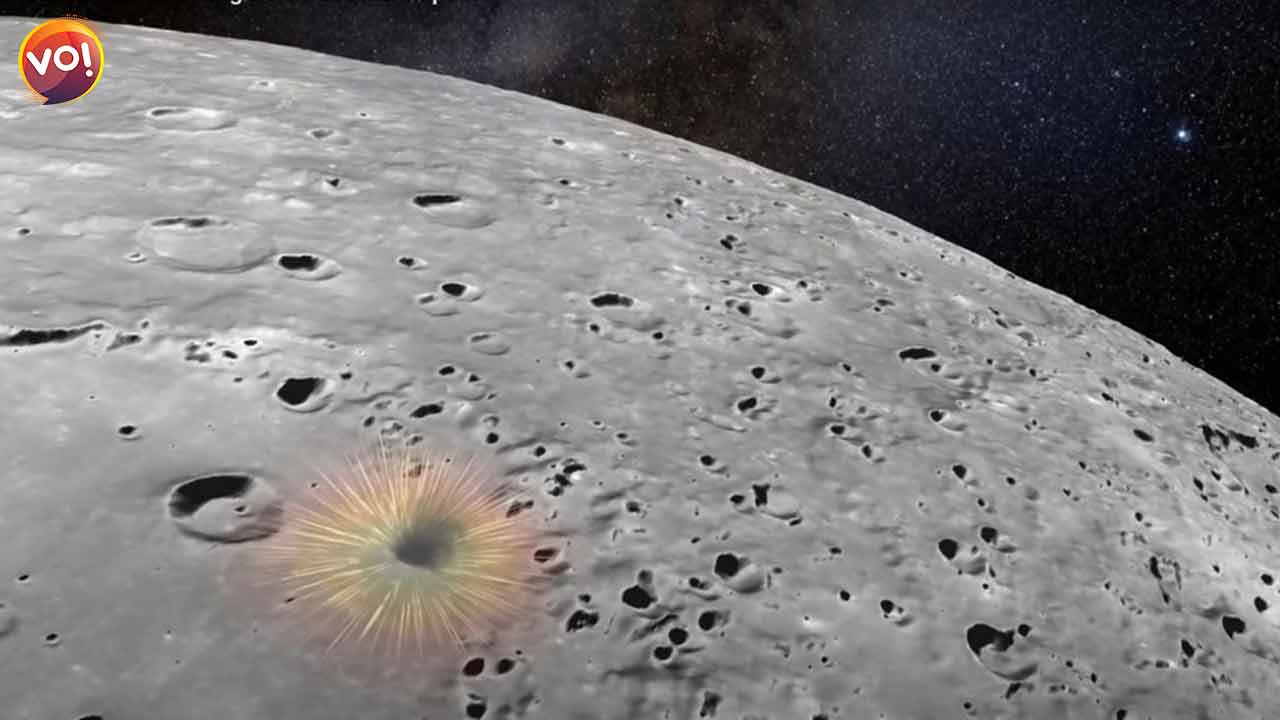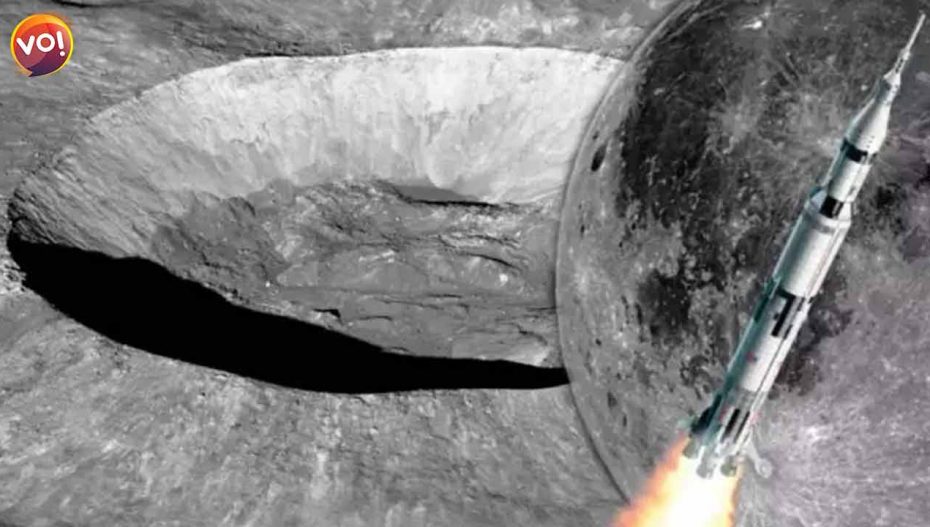An unusual double crater has been spotted on the Moon after an object crashed landed on the lunar surface earlier this year. NASA says the twin crater is the result of a rocket body colliding with the rocky surface, but the precise identity of that rocket currently remains a mystery. The rocket hit the Moon on March 4, but astronomers only reported the discovery of the impact site last week.
The images were snapped by NASA’s Lunar Reconnaissance Orbiter near the northeast rim of the Hertzsprung basin, an enormous 536-kilometer-wide (333 miles) impact basin found on the far side of the Moon. The exact time recorded is 7:25 am (EST) on March 4.
The overlapping craters, an eastern crater about 18-meters (59 feet) in diameter and a western crater about 16-meters (52 feet) in diameter together measure 367 meters in width. The dual nature of the craters is surprising since they’re like few other rocket body impacts that have scarred the Moon before.
Chunks of the Saturn V rockets used in the Apollo 13, 14, 15, and 17 missions created impact creators on the Moon during the 1970s, but these crashes resulted in a circular, albeit slightly irregular, single crater. This is because spent rockets have most of their mass towards the motor end, while the rest of the rocket is largely just an empty fuel tank, resulting in the rocket body hitting the ground vertically.


The double crater spotted near the Hertzsprung basin is unexpected because it suggests the rocket body had large masses at both ends and smashed into the Moon horizontally.
There’s speculation that the unusual craters were created by the falling booster of Chang’e 5-T1, China’s robotic spacecraft that was launched to the Moon in 2014. For its part, China’s Foreign Ministry has previously denied all charges stating that the rocket headed back towards Earth and burned up on re-entry.
Earlier this year, astronomical software designer Bill Gray predicted that a disused rocket booster would hit the lunar surface in March. While it was initially suspected to be part of a SpaceX Falcon 9 rocket, later evidence suggested it was a booster from the Chang’e 5-T1 lunar mission.
In a recent blog post, Gray said the location of the creator neatly ties up with his predictions of where the Chinese booster was predicted to land, although he is also confused by the strange nature of the double crater.
Also Read: Artemis Rocket Test Launch Aborted For Fourth Time; NASA Explains













